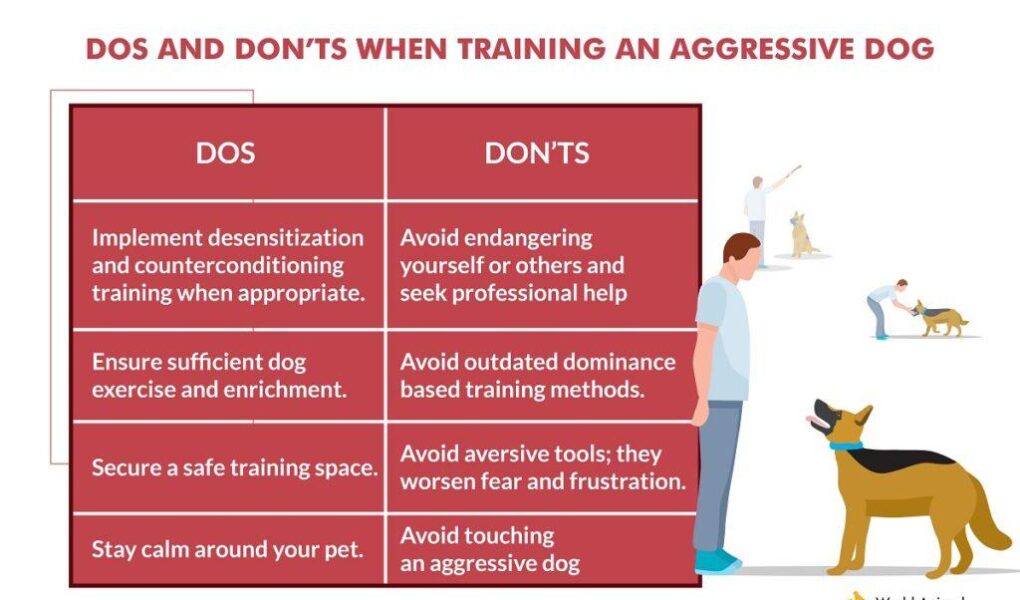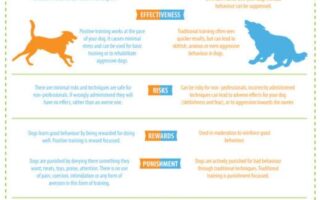Title: Navigating the Complex World of Aggressive Dog Training
In the realm of pet ownership, few challenges prove as daunting as managing an aggressive dog. For many pet parents, the affectionate tail wags and playful barks that accompany a future companion can quickly turn into a bewildering journey of defensive postures, growls, and unsettling behaviors. As the roots of aggression can vary widely—from fear and anxiety to territorial instincts—understanding and addressing these complexities requires both knowledge and patience. This article delves deep into the nuances of aggressive dog training, exploring effective strategies, humane techniques, and the essential role of empathy. Whether you are a concerned owner navigating the turbulent waters of behavioral issues or an aspiring trainer looking to refine your skills, join us as we uncover the keys to fostering a safer and more harmonious relationship with our canine companions.
Table of Contents
- Understanding Aggression in Dogs: Causes and Behaviors
- Effective Techniques for Modifying Aggressive Behavior
- Building Trust: The Importance of Positive Reinforcement
- Creating a Safe Environment for Training Success
- Q&A
- Final Thoughts
Understanding Aggression in Dogs: Causes and Behaviors
Understanding the factors that contribute to aggressive behavior in dogs is crucial for effective training and rehabilitation. Aggression can stem from various sources, including fear, territorial instincts, frustration, and pain. Each dog is unique, and their environment plays a significant role in shaping their behavior. Identifying the specific triggers that lead to aggression is the first step in addressing the issue. Owners must be vigilant in observing their dog’s body language and vocalizations, which can offer clues about their emotional state.
Common behaviors exhibited by aggressive dogs might include:
- Growling - A warning sign that should not be ignored.
- Snapping – Quick defensive movements that indicate discomfort.
- Barking excessively – Often a means of expressing discomfort or asserting dominance.
- Posturing – Suspicious stances, such as raised hackles or stiffened bodies.
The following table summarizes possible causes of aggression and their behavioral manifestations:
| Cause | Behavior |
|---|---|
| Fear | Backing away, growling, or snapping |
| Territoriality | Barking at intruders, defensive stance |
| Resource guarding | Growling or snapping when approached |
| Pain | Growling, biting when touched |
Effective Techniques for Modifying Aggressive Behavior
Training an aggressive dog requires patience and a variety of strategies tailored to the individual temperament of the dog. One effective method is counter-conditioning, which involves changing the dog’s emotional response to specific triggers. For example, if your dog reacts aggressively to other dogs, reward them with treats and praise when they remain calm in the presence of another dog. This positive reinforcement helps to associate the presence of a trigger with something enjoyable, gradually decreasing aggressive responses. Additionally, employing desensitization techniques can help alleviate fear and anxiety that often fuel aggressive behaviors. This gradual exposure to the trigger at a distance or in a controlled environment can help dogs learn to remain calm and focused when faced with their fears.
Another technique involves alternative behaviors that redirect aggression into more acceptable actions. Teach your dog commands such as “sit,” “stay,” or “leave it,” allowing them to channel their energy into these behaviors when they feel stressed or threatened. Incorporating regular exercise and mental stimulation into your dog’s routine is also crucial, as this can significantly reduce pent-up energy that leads to aggressive behavior. Consider implementing structured play sessions or puzzle toys to engage their minds. Here’s a quick reference table of techniques to incorporate into your training regimen:
| Technique | Description |
|---|---|
| Counter-conditioning | Changing emotional responses to triggers through rewards. |
| Desensitization | Gradual exposure to triggers in a controlled manner. |
| Alternative behaviors | Redirecting focus with commands and other actions. |
| Exercise/Mental stimulation | Regular activities to reduce energy and anxiety. |
Building Trust: The Importance of Positive Reinforcement
Positive reinforcement is an essential component in the process of building a strong bond between you and your dog. By recognizing and rewarding good behavior, you instill a sense of trust and security in your canine companion, which is particularly crucial for aggressive dogs. Dogs thrive on consistency and warmth, and using positive reinforcement helps create an environment where they feel safe to learn and explore. The more you reinforce good behavior, the more likely your dog will understand what is expected, leading to improved behavior overall.
Consider the following strategies for effectively implementing positive reinforcement:
- Immediate Rewards: Always reward good behavior immediately to create a clear connection.
- Variety of Rewards: Use different types of rewards, such as treats, toys, or praise, to keep your dog engaged and excited.
- Consistency is Key: Maintain consistent commands and rewards to avoid confusing your dog.
- Celebrate Small Wins: Acknowledge and reward small achievements to encourage further progress.
| Behavior | Positive Reinforcement |
|---|---|
| Sitting on Command | Offer a treat immediately after they comply |
| Walking Calmly on Leash | Praise and pet when they stay close |
| Ignoring Distractions | Reward with a toy when they avoid reacting |
Creating a Safe Environment for Training Success
Creating a harmonious atmosphere during training sessions is essential for achieving desired outcomes. A secure environment not only encourages confidence in your dog but also fosters a positive connection between you and your furry companion. To cultivate this atmosphere, consider implementing the following strategies:
- Consistent Routine: Establish a predictable schedule that helps your dog anticipate training times, reducing anxiety.
- Calm Leadership: Maintain a composed demeanor. Dogs pick up on their owner’s emotions, so staying calm can inspire tranquility in your pet.
- Positive Reinforcement: Reward good behavior with treats or praise to create a safe psychological space where your dog feels validated.
Moreover, it’s vital to assess the training environment itself. Ensure that the space is free from distractions, potential hazards, and other animals that could provoke aggressive behavior. It’s also beneficial to evaluate the following aspects:
| Training Aspect | Considerations |
|---|---|
| Location | Choose a quiet, enclosed area free from interruptions. |
| Equipment | Use suitable training tools that promote safety and comfort. |
| Duration | Keep sessions short to maintain focus and prevent fatigue. |
Q&A
Q&A: Understanding Aggressive Dog Training
Q1: What is aggressive dog training?
A1: Aggressive dog training refers to techniques and strategies aimed at modifying the behavior of dogs that display aggression. This form of training addresses issues such as biting, growling, and fear-based responses to create a safer and more harmonious environment for both dogs and their human companions.
Q2: Why do dogs exhibit aggressive behavior?
A2: Aggression in dogs can stem from various factors, including fear, dominance, territoriality, or even pain. Each dog’s history, genetics, and environment play significant roles in shaping their behavior. Understanding the root cause of aggression is crucial for effective training.
Q3: What are some common methods used in aggressive dog training?
A3: Common methods include positive reinforcement, where desirable behaviors are rewarded, and desensitization, which gradually exposes dogs to their triggers in a controlled manner. Some trainers may also employ behavior modification techniques to address the underlying causes of aggression.
Q4: Is aggressive dog training safe for my pet?
A4: When conducted by a qualified professional, aggressive dog training can be safe and beneficial. It’s essential to avoid harsh methods that may escalate aggressive behavior or harm the dog. Always seek trainers who emphasize compassion and science-backed approaches.
Q5: How long does aggressive dog training typically take?
A5: The duration of training varies widely depending on the dog’s individual circumstances, including the severity of the aggression and the consistency of training. While some dogs may show improvement in weeks, others may require months of dedicated work to achieve lasting behavior changes.
Q6: Can any dog be trained to overcome aggression?
A6: Many dogs can be trained to manage or reduce aggressive behaviors, but success depends on the dog’s temperament, the owner’s commitment, and the methods used. In some cases, higher levels of intervention, such as medical evaluation or more intensive behavioral training, may be necessary.
Q7: What should I look for in a trainer for aggressive dog training?
A7: Seek a trainer who is certified, experienced, and employs positive reinforcement methods. Reading reviews, asking for recommendations, and requesting a preliminary meeting can help ensure that the trainer’s philosophy aligns with your goals for your dog.
Q8: What can I do at home to help my aggressive dog?
A8: Consistency is key. Establishing routines, providing mental stimulation, and practicing basic obedience can foster positive behavior at home. Engaging your dog in activities that build trust and confidence, such as socialization at a comfortable pace, is also essential.
Q9: What are the risks of not addressing aggressive behavior in dogs?
A9: If left unaddressed, aggressive behavior can escalate, leading to potential harm to people or other animals, as well as increased stress for the dog. Proper training helps ensure the safety and well-being of all involved.
Q10: Can aggressive dogs lead fulfilling lives?
A10: Absolutely! With the right training, patience, and understanding, many aggressive dogs can learn to navigate the world confidently and enjoy fulfilling lives. It’s about finding the right approach and support system for the individual canine.
—
Conclusion
Training an aggressive dog requires a blend of patience, knowledge, and commitment. By understanding the underlying causes of aggression and implementing effective training strategies, both dogs and their humans can look forward to a brighter future together.
Final Thoughts
As we wrap up our exploration of aggressive dog training, it’s vital to remember that every dog is an individual, shaped by its unique experiences and environment. While the techniques discussed can serve as valuable tools, the essence of successful training lies in understanding, patience, and compassion. Aggression often stems from fear or anxiety, and addressing these root causes can pave the way for a more harmonious relationship between dog and owner.
Instead of simply imposing discipline, let us shift our focus toward building trust and reinforcing positive behavior. Whether you opt for professional guidance or choose to embark on this journey with the right resources, the ultimate goal remains the same: fostering a safe and loving environment for both canine and human companions. As you consider the next steps in your training journey, embrace the notion that a balanced approach yields the most rewarding results. After all, a well-trained dog is not just a pet; it’s a cherished member of the family, capable of love, loyalty, and a lifetime of joyful companionship.



